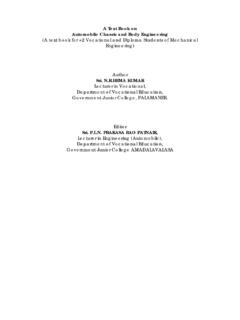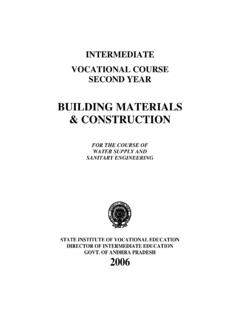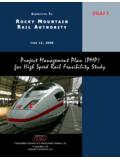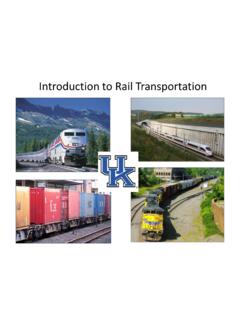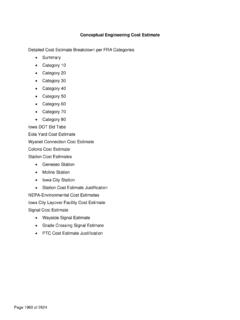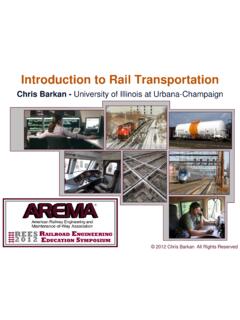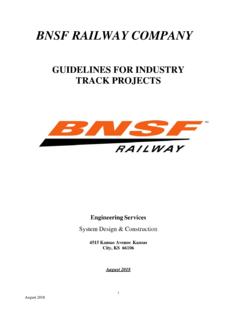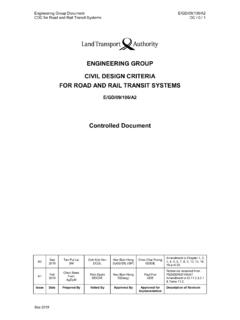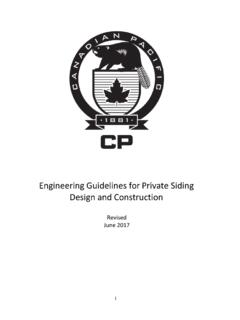Transcription of CIVIL ENGINEERING DRAWING
1 INTERMEDIATE VOCATIONAL COURSE SECOND YEAR CIVIL ENGINEERING DRAWING FOR THE COURSE OF WATER SUPPLY AND SANITARY ENGINEERING STATE INSTITUTE OF VOCATIONAL EDUCATION DIRECTOR OF INTERMEDIATE EDUCATION GOVT. OF ANDHRA PRADESH 2005 Intermediate Vocational Course, 2nd Year : CIVIL ENGINEERING DRAWING (For the Course of Water Supply and Sanitary ENGINEERING ) Author : Sri P. Venkateswara Rao, State Institute of Vocational Education Andhra Pradesh, Hyderabad. Printed and Published by the Telugu Akademi, Hyderabad on behalf of State Institute of Vocational Education Govt. of Andhra Pradesh, Hyderabad. First Edition : 2005 Copies : All rights whatsoever in this book are strictly reserved and no portion of it may be reproduced any process for any purpose without the written permission of the copyright owners.
2 Price Rs: /- Text Printed at .. Andhra Pradesh. AUTHOR & EDITOR Puli Venkateshwara Rao, (STRUCT. ENGG.) Junior Lecturer in Vocational, WS & SE Govt. Junior College, Malkajgiri, Secunderabad. WATER SUPPLY AND SANITARY ENGINEERING IVC SECOND YEAR CIVIL ENGINEERING DRAWING STATE INSTITUTE OF VOCATIONAL EDUCATION DIRECTOR OF INTERMEDIATE EDUCATION GOVT. OF ANDHRAPRADESH CONTENTS Chapter Name of the chapter No. of Pg. No. No. periods 1. Conventional Signs, Doors, Windows, Footings 25 1 2. Building DRAWING 60 12 3.
3 Detailed Drawings of Water Supply and Drainage Connections to Building 15 28 4. Layout of Various Water Supply and Sanitary Fittings in Bath and 10 33 5. Overhead Tank 05 37 6. Septic Tank, Manhole and Dispersion Trench 15 40 7. Layout Sketch of Water Purification Plant 05 48 8. Layout Sketch of Sewage Treatment Plant 05 51 9. Tracing and Preparation of Ammonia Prints 20 54 TOTAL PERIODS 160 EXERCISE LIST OF PRACTICALS PRAC- TICAL NO. NAME OF THE PRACTICAL PAGE NO. 1 ENGG. MATERIALS SYMBOLS 3 2 WATER SUPPLY AND SANITARY FIXTURES SYMBOLS 4 3 ELECTRICAL INSTALLATIONS SYMBOLS 5 4 FULLY PANELLED DOOR 9 5 FULLY PANELLED WINDOW 10 6 ISOLATED SQUARE FOOTING 10 7 CROSS SECTION OF LOAD BEARING WALL 11 8 SINGLE ROOM BUILDING 16 9 TWO ROOM BUILDING 19 10 RESIDENTIAL BUILDING - I 21 11 SINGLE BEDROOM HOUSE 23 12 RESIDENTIAL BUILDING - II 25 13 TWO STOREYED BUILDING 26 14 LAYOUT AND SECTION OF WATER SUPPLY AND DRAINAGE CONNECTIONS TO A BUILDING 32 15 LAYOUT OF WATER SUPPLY IN SINGLE STOREY BUILDING 34 16 LAYOUT OF DRAINAGE SYSTEM IN MULTI STOREYED BUILDING 36 16 OVERHEAD TANK
4 39 17 SEPTIC TANK FOR 10 USERS 43 18 SEPTIC TANK FOR 50 USERS 43 19 DISPERSION TRENCH 45 20 DROP MANHOLE 47 21 TYPICAL LAYOUT OF WATER TREATMENT WORKS 50 22 LAYOUT OF SEWAGE TREATMENT PLANT 53 CIVIL ENGINEERING DRAWING - 1 - CHAPTER 1 CONVENTIONAL SIGNS, DOORS, WINDOWS, FOOTINGS INTRODUCTION : DRAWING is the language of engineers. An engineer must be well conversant with drawings. Drawings represent reduced shape of structure and the owner will be able to see what is going to happen. Drawings are prepared as per the requirements of owner. In case of public buildings, the functional aspects are studied and accordingly the drawings are prepared as per recommendations laid down in National Building Code ( ) or as per Indian Standard specifications.
5 Any modifications like additions or omissions can be suggested from a study of the drawings before actual construction of the structure is started. Drawings provide a language with specific data to Architects, Engineers and workmen at the site to construct the structure accordingly. In case of public buildings or any other CIVIL ENGINEERING works, it is essential to work out different items of construction with their quantities for estimating the total cost of construction project. For this purpose, drawings of different parts and different views are essential so that the approval of work from the sanctioning authority can be obtained. Further, the detailed drawings form an essential contract documents, when the work is handed over to a contractor.
6 Hence it is necessary to prepare detailed drawings, which will inform the contractor, the exact information, which he needs during the construction of different items of work. Drawings, thus prepared should be carefully even after the completion of work. Thus, it becomes asses the possibility of further vertical expansion by referring to the foundation details initially provided. REQUIREMENTS OF GOOD DRAWING : 1. DRAWING should be clear, simple and clean 2. Should agree with the actual measurements by the accurately drawn scaled measurements. CIVIL ENGINEERING DRAWING - 2 - 3. Exact information should be provided in order to carry out the work at site without scaling for missing measurements.
7 4. Only minimum notes to support the drawings should be indicated in the drawings. 5. Sufficient space should be provided between the views so as to mark the dimensions without crowding. CONVENTIONAL SIGNS AND SYMBOLS: Conventional signs are used to represent the particular item like stone masonary, brick masonary, concrete etc in the section of DRAWING . ( ,) when the materials are cut by any imaginary plane. Conventional symbols are provided to indicate doors, windows, their fixing, movement of shutters. When they are cloud or opened, various water supply and sanitary fixtures like tap, wash basin, , urinals, Kitchen sink, shower etc, symbols are used to indicate the position of electrical fittings like lamp, switch, power socket, fan etc.
8 To indicate positions of furniture on DRAWING room, bedroom, suitable symbols are used. The Bureau of Indian standards ( ) has recommended the conventional signs and symbols for the following purposes. 1. Avoid confusion and to understand the drawings 2. Save the time in making out various details in the DRAWING 3. Identify the various details of materials, Electrical fixtures, water-supply and sanitary fittings, Position of furniture s etc. 4. To prevent any dispute between contractor and owner in the actual construction of the structure. The conventional signs for CIVIL engg. materials as shown CIVIL ENGINEERING DRAWING - 3 - Practical 1. Engg. Materials symbols - diagrams CIVIL ENGINEERING DRAWING - 4 - Practical 2.
9 Water supply and Sanitary fixtures - diagrams CIVIL ENGINEERING DRAWING - 5 - Practical 3. Electrical Installations diagrams CIVIL ENGINEERING DRAWING - 6 - DOORS: Doors are the means to provide access to the rooms of a building. A door consists of a frame and one or two shutters or leaves. Accordingly they are called as single shuttered or double shuttered door. Door frame consists of two vertical members called styles and two horizontal members one at top called top rail and one bottom rail or sill or threshold. Now-a-days the bottom rail is omitted and made to flush with floor level. The top tail is projected beyond the styles by about 150mm and these projections are known as horns.
10 These are built into masonary fro keeping in position. Clamps of flat iron about 300mm 50mm 6mm are fixed to the vertical styles on the outerside known as Hold Fasts in the shape of letter Z . These are embedded into the masonary wall to hold the frame in position. When bottom member (sill) is not provided, the vertical members (styles) should be inserted in the floor finish by about 40 mm to 50mm Shutter for the door frame may be fully panelled or partly glazed and partially panelled with one or two leaves or shutters. In fully panelled shutter the no. of panels may be 3,4 or 6 as per the design and other practical considerations. In the case of door shutters, the horizontal members are called as rails (top, bottom, lock and frieze).
